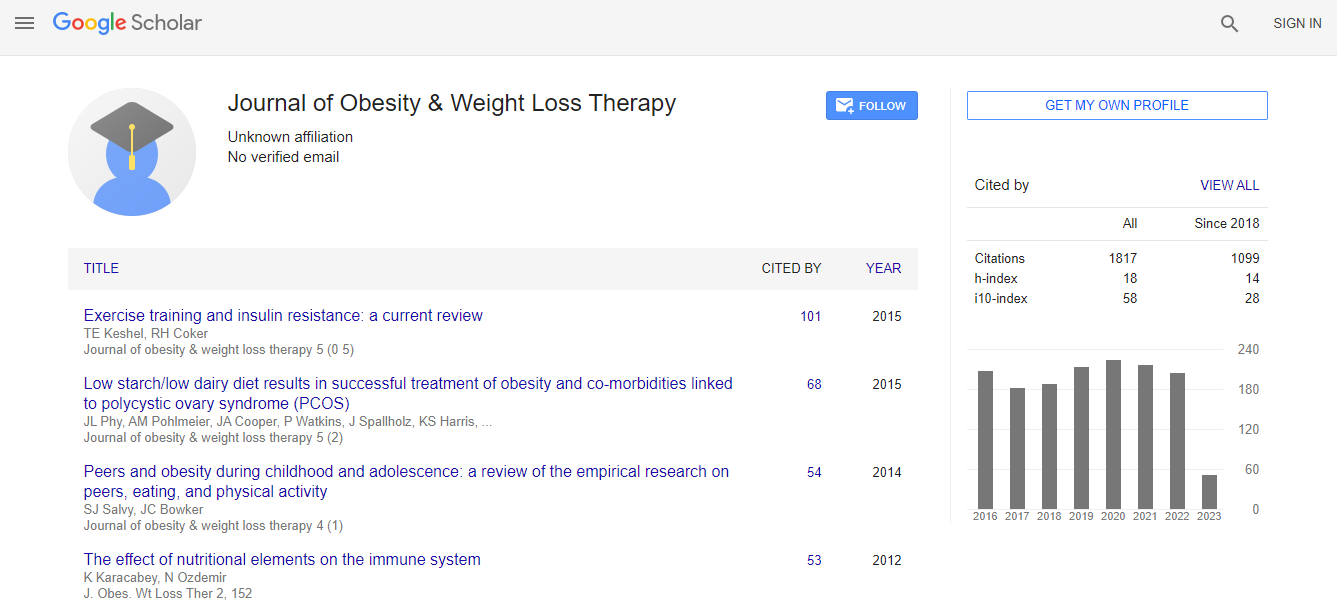Our Group organises 3000+ Global Events every year across USA, Europe & Asia with support from 1000 more scientific Societies and Publishes 700+ ║┌┴¤═° Journals which contains over 50000 eminent personalities, reputed scientists as editorial board members.
║┌┴¤═° Journals gaining more Readers and Citations
700 Journals and 15,000,000 Readers Each Journal is getting 25,000+ Readers
Citations : 2305
Indexed In
- Index Copernicus
- Google Scholar
- Open J Gate
- Genamics JournalSeek
- Centre for Agriculture and Biosciences International (CABI)
- RefSeek
- Hamdard University
- EBSCO A-Z
- OCLC- WorldCat
- SWB online catalog
- CABI full text
- Cab direct
- Publons
- Geneva Foundation for Medical Education and Research
- Euro Pub
- University of Bristol
- Pubmed
- ICMJE
Useful Links
Recommended Journals
Related Subjects
Share This Page
Nutrient intakes according to eating patterns and nutritional status for older people
4th International Conference and Exhibition on Obesity and Weight Management
Jose Eduardo Corrente and Patricia Moraes Ferreira
University of Sao Paulo State, Brazil
ScientificTracks Abstracts: J Obes Weight Loss Ther
DOI:
Abstract
Aims & Objectives: The aim of this work was to analyze the nutrient intakes according the eating pattern for older people. Methods: From March to June of 2011, 172 subjects of 60 years and more and registered in the basic health units of Botucatu city ├ó┬?┬? S├?┬úo Paulo Brazil were evaluated. Anthropometric measureswere obtained to classify in obese (Body Mass Index ├ó┬?┬? BMI ├ó┬?┬ą 30 kg/m2) and non-obese (Body Mass Index ├ó┬?┬? BMI <30 kg/m2). A food frequency questionnaire was applied to identify eating patterns and transformed the nutrient daily intakes. It was found that high mean of phosphorus and alcohol was consumed by obese men and selenium for obese women. Consumption of high means of protein, fiber, phosphorus, magnesium, sodium, potassium, retinol, folate, cuprum, vitamin B12 and E were consumed by people with high adherence to the ├ó┬?┬?healthy├ó┬?┬Ł pattern compared with the ones with low adherence. Those with high adherence to ├ó┬?┬?snacks and weekend meals├ó┬?┬Łpattern consumed lower mean of vitamin C and retinol. Results: A high adherence to fruits pattern was represented by higher consumption of saturated fat, sodium and selenium and lower average of fiber, magnesium and manganese; high adherence to light and whole food pattern represented higher consumption of fiber, vitamin C and potassium; high adherence to the ├ó┬?┬?bland diet├ó┬?┬Ł represents lower consumption of protein and more carbohydrates; high adherence to the patter ├ó┬?┬?traditional├ó┬?┬Ł represents greater consumption of vitamin D, fibers, iron, folate, copper, and manganese, and less consumption of vitamin B12. Conclusion: As a conclusion, it was observed coherence in the major analyzed nutrients among patterns enabling a better characterization of the intake behavior for older people.Biography
Jose Eduardo Corrente received an Undergraduate Degree in Mathematics and took his MSc and PhD in Biostatistics. He is Associate Professor at Biostatistics Department University of Sao Paulo State - UNESP, and his field of research is epidemiology of third age. Main projects are in quality of life, lifestyle and nutritional aspects for older people with respect to eating patterns and adequate intake as well as publications in reputed journals.
Email: jecorren@gmail.com

